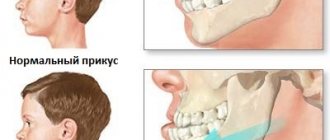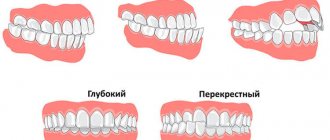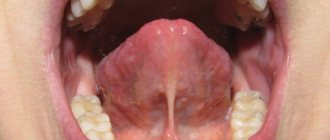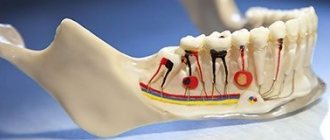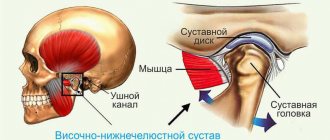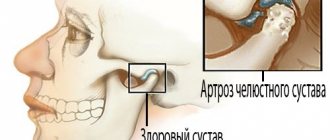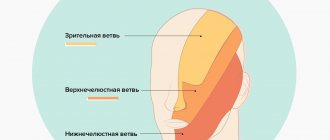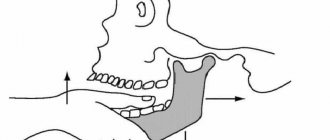Jaw muscle tension can be the result of stress, anxiety, inflammation or injury. The jaw joint, also called the temporomandibular joint (TMJ), is a ball-and-socket joint similar to the shoulder. The muscles surrounding it control movements such as opening and closing the mouth, chewing and yawning. Depending on the cause, a person may experience tension in the TMJ muscles on the left, right, or both sides. This may happen suddenly or gradually and may continue for a long time. Jaw muscle tension may be accompanied by pain.
Causes of jaw muscle tension
Stress or anxiety
Stress and anxiety are common causes of muscle tension. A person may clench their jaw or grind their teeth without noticing it when they are stressed, which can lead to muscle tension over time. Stress or anxiety can also cause a person to clench their fists and lead to tense shoulder and neck muscles.
TMJ dysfunction
TMJ dysfunction affects the lower jaw joint as well as the surrounding muscles. TMJ dysfunction can cause:
- bodily injury;
- grinding or clenching of teeth;
- inflammation from infections or autoimmune diseases.
Symptoms of TMJ dysfunction depend on the cause and severity of the condition and may include:
- soreness in the jaw, ear, face, or neck;
- difficulty chewing or opening your mouth;
- a jerky or clicking sound when moving the jaw;
- headache.
Tetanus
Tetanus is a bacterial infection caused by the bacteria Clostridium tetani. The pathogen produces toxins that cause painful contractions of the neck and jaw muscles. The infection can limit a person's ability to open their mouth and swallow. Fortunately, vaccines can prevent tetanus. Vaccination recommendations:
- DTP vaccination for children aged 2 months to 6 years;
- Tdap booster vaccine for adolescents aged 11-12 years;
- Td vaccine every 10 years for adults.
Grinding of teeth
Bruxism is the medical term for unconscious clenching or grinding of teeth. This can happen while you are awake or asleep. Chronic stress or anxiety can cause a person to grind their teeth. Certain medications and nervous system disorders can also cause bruxism.
Symptoms of Bruxism
- stiffness or soreness in the jaw and surrounding muscles;
- tooth pain;
- clicking in the temporomandibular joint;
- headache.
In some cases, bruxism can lead to tooth fracture.
Rheumatoid arthritis
Rheumatoid arthritis (RA) is a chronic autoimmune disease that causes inflammation in the joints. Approximately 50% of people with RA also experience symptoms in the TMJ. RA can cause the following symptoms:
- jaw clenching;
- joint pain, inflammation and stiffness;
- low-grade fever;
- weight loss;
- lumps under the skin of the finger joints and elbow joint.
Osteoarthritis
Osteoarthritis (OA) develops in people over 65 years of age. Although OA typically occurs in the joints of the hands, knees and hips, it can also affect the TMJ.
What are the symptoms of bruxism and its impact on health?
Unfortunately, symptoms include repeated teeth grinding or clicking during sleep. All this can cause difficulty breathing and affect changes in blood pressure and heart rate.
After sleep, you may experience toothache and headache, symptoms of dizziness and a feeling of drowsiness during the day. You need to know and understand that if you do not treat bruxism in a timely manner, there can be such serious consequences as tooth wear, the appearance of various chips and cracks on them, and possible fractures in the places where crowns are installed.
Diagnostics
Several conditions can cause jaw clenching. The doctor or dentist will review the person's medical history and ask about symptoms. Imaging tests can help diagnose inflammation and structural abnormalities that are causing the jaw to tighten. Some of these tests include:
- Radiography;
- CT scan;
- MRI.
When to see a doctor
If a person experiences the following symptoms, they should consult a doctor:
- severe pain in the jaw, which increases with movement or chewing;
- difficulty opening your mouth or swallowing;
- headache.
How does increased jaw clenching manifest?
Problems due to teeth clenching can be identified by the following signs:
- pain in the mandibular joint;
- restrictions on opening/closing the mouth;
- increased wear of chewing teeth;
- the appearance of chips on fillings;
- clenching of teeth during maximum concentration or in moments of anger;
- night grinding of teeth;
- fatigue of the facial muscles when talking or chewing for a long time;
- pain in the temples due to emotional fatigue;
- frequent tongue biting;
- ringing or pain in the ears;
- sinus pain;
- daytime sleepiness;
- soreness of the facial muscles after waking up.
If such symptoms appear, it is necessary to consult a neurologist and dentist to determine the causes of severe clenching of teeth and complex therapy.
How to relieve muscle tension in the lower jaw
The following methods can be used to relieve jaw tension and pain:
Jaw joint stretching
Stretching the jaw joint muscles can increase the range of motion of the jaw and reduce TMJ symptoms. Methods for stretching the muscles of the lower jaw:
Relaxed Jaw Stretch
- place the tip of your tongue behind your upper front teeth;
- lower the lower jaw so that the lower teeth lag behind the upper teeth;
- Relax your jaw muscles.
Exercise "Goldfish"
- press your tongue to the roof of your mouth;
- place your index finger on the TMJ and the other finger on your chin;
- open and close your mouth.
Diet changes
A person with lower jaw muscle tension should eat soft foods. Examples of soft foods:
- applesauce;
- tofu;
- yogurt;
- smoothies and juices.
Mouth guards
Mouth guards can help relieve pressure on your lower jaw and prevent teeth grinding or clenching. They can also realign a misaligned jaw joint.
Shortwave diathermy
Short-wave diathermy involves the use of high-frequency electromagnetic waves to treat pain and inflammation in the body.
Other treatments
Additional procedures for jaw muscle tension:
- hot and cold compresses;
- corticosteroid injections;
- nonsteroidal anti-inflammatory drugs such as aspirin and ibuprofen;
- muscle relaxants or painkillers;
- antidepressants;
- acupuncture.
Psychosomatics of the jaw clamp
The jaw segment includes the muscles of the chin, throat and back of the head. According to Wilhelm Reich's theory, psychosomatic blocking of muscle groups in this segment occurs due to the suppression of three basic emotions: crying, screaming and anger.
This dependence is not difficult to trace if you observe how a person’s face changes when he tries to suppress these emotions. A person’s face distorts in anger, we can see the nodules playing. While holding back crying, we will feel a lump in our throat, we will often gasp for air and swallow nervously, while feeling tension not only in the throat, but also in the back of the head. But a suppressed cry will be expressed in teeth clenched to the point of pain.
To determine if you have a jaw lock, you can do an experiment. Place three fingers of one hand together and place them between your open jaws. Hold them in this position for a while and evaluate the sensations in the throat, back of the head, jaw and chin. If the fingers do not fit or unpleasant painful sensations occur, this indicates a clamp.
The muscles of the jaw segment, in addition to healthy ones, can be in two pathological states: hypertonicity (excessive tension) and hypoblock (excessive relaxation). No matter how the jaw “shell” is expressed, it leads not only to painful conditions, but also worsens relationships with others. People nearby can feel other people's muscle blocks on a subconscious level. This can create difficulties in communication, since a jaw block can be expressed in the inability to defend one’s opinion, the habit of “keeping quiet”, the habit of being manipulated and other character traits that interfere with open communication.
Working with jaw segment clamping in body-oriented psychotherapy
Body-oriented psychotherapy gives excellent results in removing jaw tension. This type of therapy is based on the theory of the muscular armor - a muscle clamp formed as a result of psychotrauma.
If we consider the stages of the formation of the shell in order, then the scheme of its formation looks like this: 1. A psychotraumatic event occurs. 2. Anxiety arises caused by events associated with psychotrauma. 3. A behavioral stereotype is formed in the form of avoiding repetition of the traumatic situation. 4. The fear of repetition begins to manifest itself on a physical level, muscle tension becomes a habit. 5. The developed state of hypertonicity forms a shell.
In practice, this can happen in the following scenario: 1. At school, the teacher called the child stupid and incapable of learning - psychological trauma was received. 2. The consequence is a reluctance to go to school, since the traumatic event happened there. 3. Since the parents do not allow the child to leave school, the child chooses a new pattern of behavior - to appear invisible, to shrink, to exclude contacts with teachers (in order to avoid a repetition of the traumatic situation). 4. The first stage of clamping is formed - suppressed crying. The child knows for sure that it is forbidden to cry at school - this will put him in an even more vulnerable position. The result is a lump in the throat, clenched teeth, tension in the back of the head. But you need to go to school every day. 5. The habit of being in a state of suppressed crying finally forms the shell. External manifestation – raised shoulders, quiet voice, taciturnity. Internal manifestation – low self-esteem, uncertainty, resentment.
Since the external and internal essence of a person are closely interconnected, careful contact with the patient’s body helps to effectively and carefully release accumulated internal psychological blocks. My task, as a body-oriented therapist, is to carefully work with the patient to identify and “release” the clamp, that is, to release it.
To do this, you will need to go through several stages of interaction. The first stage is the detection of the body shell and the establishment of its type. Next, work will be carried out to relieve tension in the problem area. For this, various bodily techniques are used. In parallel with this, psychotrauma is revealed, which entails the formation of a clamp. Psychotherapeutic work involves working through the detected psychotrauma and eliminating it. During such complex – physical and psychological – therapy, energy is released, which leads to a cure for a neurotic disease and an improvement in the overall mental and physical condition. If you feel you need support on your journey to health, I would love to be your guide.
Psychosomatics of throat tension
My other article (link) tells more about the tightness in the throat. Here we take a closer look at how the throat muscles are connected to the jaw. The tongue and deep neck muscles are also associated with suppressing screaming, crying and anger. Depending on the characteristics of the person and the depth of the problem, a clamp forms either in the throat, or in the jaw, or both.
As a rule, the formation of the habit of restraining these emotions occurs in childhood. By prohibiting the child from natural manifestations of negative feelings, parents force him to hide his true self. “Don’t whine, don’t bite your nails, don’t make faces, don’t spit, shut your mouth, don’t talk nonsense, don’t sulk” - any form of education through suppression leads to the fact that the child does not learn to relieve tension and strengthens the jaw clamp. But it is he who forces him to do all of the above forbidden actions. In order for a child to learn to cope with pressure without resorting to what we think are uncultured habits, it is better to invite him to dialogue. If your baby is biting his nails, it is best to gently find out what is making him nervous. If he spits or grimaces, ask if the child wants to tell you something. Open communication helps a child cope with emotions correctly and grow up psychologically healthy.
Somatic manifestations of a tight throat include a too quiet voice, silence, painful sensations in the form of a coma and difficulty breathing. The desire to swallow frequently, put your hand on your throat, cough nervously - all this also indicates a throat tension.
